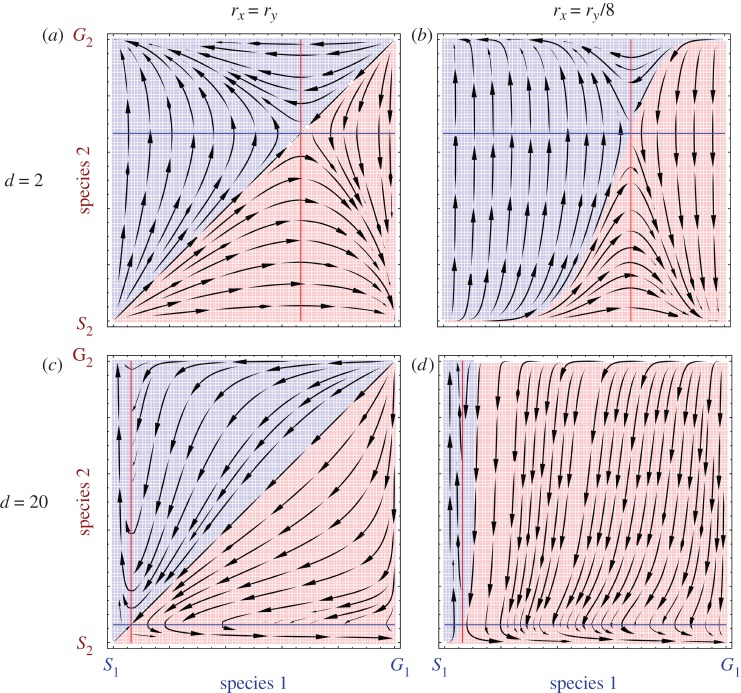Figure 1.
The composition of both species can range from all Selfish (S) to all Generous (G). If the other species is sufficiently Generous, Selfish behaviour is favoured in both species. However, if the other species is Selfish, Generous behaviour is advantageous. This is captured by the snowdrift game discussed in the text. For equal evolutionary rates, rx = ry, the basins of attraction for the two outcomes (S1, G2) and (G1, S2) are of equal size (a,c). The colours illustrate the regions leading to the outcomes favourable to species 1 (blue-shaded area leading to (S1, G2)) and species 2 (red-shaded area leading to (G1, S2)). For a two-player game, d = 2, and rx = ry/8, the basin of attraction favourable to the slower evolving species 1 grows substantially (b) [12]. For a 20-player game, d = 20, the basins of attractions have identical size for equal evolutionary rates, but the position of the internal equilibrium is shifted (c). When species 1 evolves slower than species 2 in this situation, most of the initial conditions lead to a solution that is unfavourable to species 1 (d). Thus, for 20 players instead of two, the Red King effect is reversed (b = 2 and c = 1).

